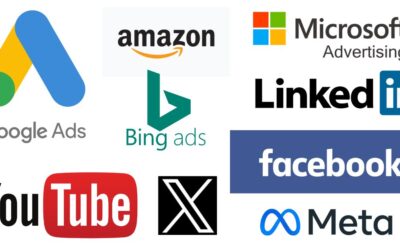Non-profit organizations are essential for creating a positive impact on society. They strive to make a difference in the world by raising awareness, funds, and support for various social causes. However, the success of these organizations largely depends on their ability to attract and engage supporters. That’s where marketing comes in. By utilizing effective marketing tactics, non-profits can reach a wider audience and achieve their goals more efficiently.
Email Marketing: Best Practices For Email Marketing
Events: Best Practices For Events
Content Marketing: Best Practices For Content Marketing
Social Media: Best Practices For Social Media
Paid Search Ads (PPC): Best Practices For PPC
Partnerships: Best Practices For Partnerships
Non-Profit Email Marketing
With over 4 billion daily email users (Statistica), email marketing is a powerful tool for non-profits to communicate with their audience. It allows organizations to stay in touch with supporters, keep them informed of new initiatives, and encourage donations. Non-profits can use email marketing to promote events, share success stories, and send newsletters to keep supporters up-to-date.
Best Practices For Email Marketing
- Build an email list: Start by collecting emails from supporters and potential donors through your website, events, and other channels. Offer an incentive, such as a free e-book or newsletter, to encourage people to sign up.
- Personalize your emails: Use the recipient’s name and personalize the content based on their interests and previous interactions with your organization.
- Segment your list: Divide your email list into smaller groups based on demographics, interests, and behavior. This allows you to send targeted messages that resonate with each group.
- Use a compelling subject line: The subject line is the first thing people see in their inbox, so make sure it’s attention-grabbing and relevant to the content of your email.
- Keep it concise: People have short attention spans, so keep your emails brief and to the point. Use images and bullet points to make the content more scannable.
Non-Profit Events
Events are a great way for non-profits to engage with their audience and create a sense of community. Whether it’s a fundraising event, a conference, or a charity walk, events allow non-profits to showcase their mission and connect with supporters in person.
Best Practices For Events
- Set clear goals: Define the purpose of your event and set specific goals that you want to achieve. This could be raising a certain amount of money, increasing awareness of your cause, or engaging new supporters.
- Choose the right venue: Consider the size of your event, the location, and the accessibility of the venue. Make sure it’s easily accessible by public transportation and has the necessary amenities.
- Promote your event: Use a variety of channels, such as email, social media, and your website, to promote your event. Create a hashtag and encourage attendees to share their experiences on social media.
- Provide value: Make sure your event provides value to attendees, whether it’s through inspiring speakers, educational sessions, or fun activities. Make it an enjoyable experience that people will want to come back to.
- Follow up: After your event, follow up with attendees to thank them for their support and provide updates on your organization’s progress. This will help build long-term relationships with supporters.
Non-Profit Content Marketing
Content marketing is a powerful way for non-profits to share their mission and engage with supporters. By creating valuable and informative content, non-profits can educate their audience on the importance of their cause and build trust. The Content Marketing Institute offers a great summary on content marketing.
Best Practices For Content Marketing
- Define your audience: Determine who your target audience is and what type of content they’re interested in. This could be through surveys, social media listening, or analyzing website traffic.
Create a content calendar: Plan your content in advance and create a schedule for when it will be published. This ensures that you have a consistent flow of content and helps with organization. - Use a variety of formats: Mix up your content with blogs, videos, infographics, and other formats to keep your audience engaged. Different people prefer different types of content, so offering a variety can appeal to a wider audience.
- Use storytelling: Share stories of the impact your organization has made to make your content more emotional and memorable. This can help build a deeper connection with your audience and inspire them to take action.
- Promote your content: Use social media, email marketing, and other channels to promote your content and drive traffic to your website. Make it easy for people to share your content with their networks.
Non-Profit Social Media
Social media marketing is a crucial tool for non-profits to reach a wider audience and engage with supporters. It allows organizations to share updates, promote events, and build relationships with their audience.
Best Practices For Social Media
- Choose the right platforms: Determine which social media platforms your audience is most active on and focus your efforts on those platforms. This could be Facebook, Twitter, Instagram, or LinkedIn.
- Post regularly: Post on a regular schedule to keep your audience engaged and informed. Use a content calendar to plan your posts in advance.
- Use visuals: Use images and videos to make your posts more engaging and visually appealing. People are more likely to engage with visual content than text-only content.
- Engage with your audience: Respond to comments and messages promptly to build relationships with your audience and show that you value their support.
- Use hashtags: Use relevant hashtags to reach a wider audience and make it easier for people to find your content.
Non-Profit Paid Search Ads (PPC)
Paid search ads, also known as PPC (pay-per-click) ads, can be a powerful tool for non-profits to reach a wider audience and drive traffic to their website. These ads appear at the top of search engine results when someone searches for a specific keyword or phrase.
Best Practices For PPC
- Set a budget: Determine how much you’re willing to spend on PPC ads and set a budget accordingly. This ensures that you don’t overspend and helps you track your return on investment.
Choose the right keywords: Choose keywords that are relevant to your organization and are likely to be searched for by your target audience. Use tools like Google Keyword Planner to research keywords. - Write compelling ad copy: Write ad copy that is attention-grabbing and relevant to the keyword being searched for. Use a call-to-action to encourage people to click on your ad.
- Use landing pages: Create landing pages that are specifically designed for the ad and make it easy for people to take the desired action, such as donating or signing up for your newsletter.
- Monitor and adjust: Monitor the performance of your PPC ads regularly and adjust your strategy as needed. This can help you improve the effectiveness of your ads and get the most out of your budget.
Non-Profit Partnerships
Partnering with other organizations can be a great way for non-profits to reach a wider audience and achieve their goals more efficiently. By collaborating with like-minded organizations, non-profits can pool their resources and expertise to make a bigger impact.
Best Practices For Partnerships
- Choose the right partners: Choose partners that have a similar mission and values as your organization. Make sure the partnership is mutually beneficial and aligns with your goals.
- Define the partnership: Define the scope of the partnership, including what each organization will contribute and what the goals are. This can help ensure that everyone is on the same page and working towards the same objective.
- Communicate regularly: Communicate regularly with your partners to keep them informed of progress and discuss any issues. This can help build a strong relationship and ensure the success of the partnership.
- Leverage each other’s networks: Use each other’s networks to reach a wider audience and promote your organization. This could include sharing content, cross-promoting events, or co-hosting webinars.
- Evaluate the partnership: Evaluate the success of the partnership regularly and make adjustments as needed. This can help ensure that the partnership continues to be effective and beneficial for all parties involved.
Marketing is an essential tool for non-profits to raise awareness, build relationships, and drive donations and support. By using a combination of tactics non-profits can reach a wider audience and achieve their goals more efficiently. However, it’s important to remember that there is no one-size-fits-all solution and that what works for one organization may not work for another. By experimenting and testing different strategies, non-profits can find the tactics that work best for their specific needs and goals.





